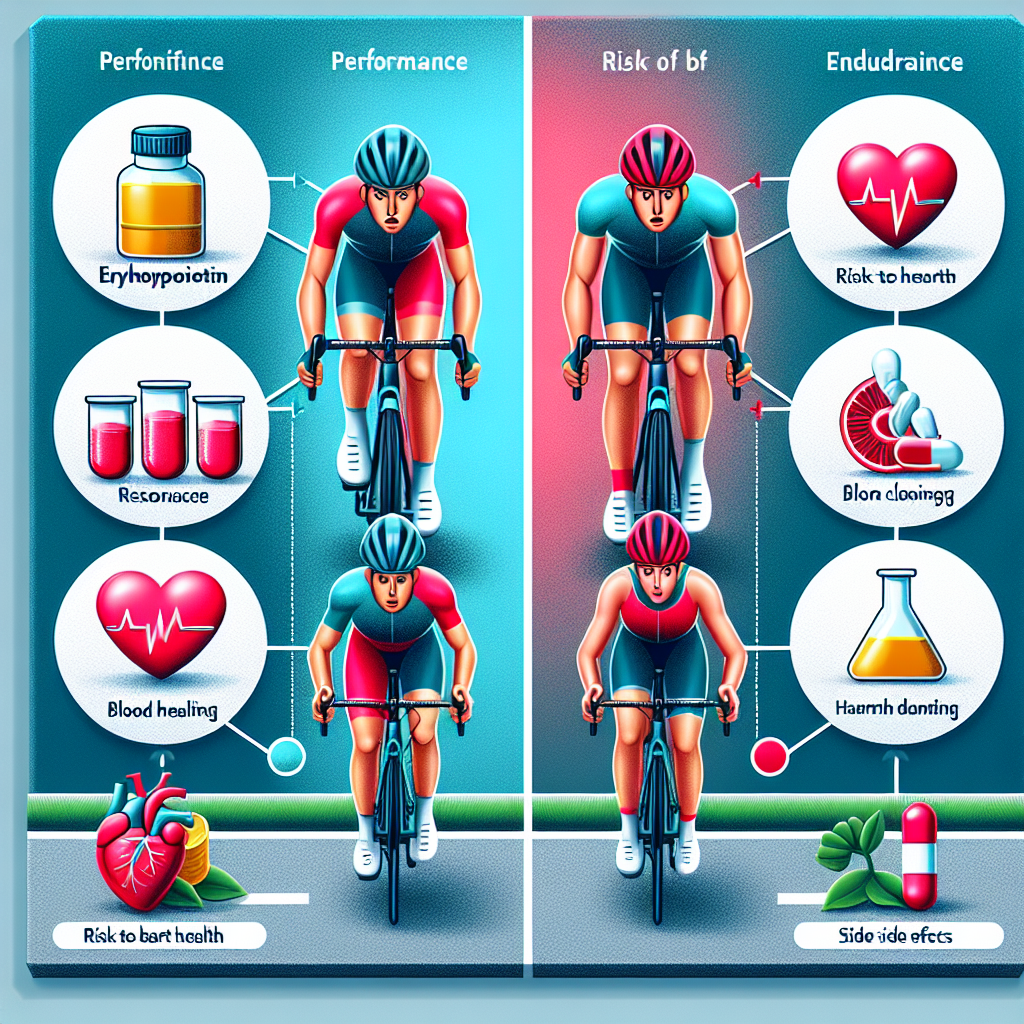-
Table of Contents
Erythropoietin Use in Professional Cyclists: Benefits and Risks
Erythropoietin (EPO) is a hormone naturally produced by the kidneys that stimulates the production of red blood cells. In recent years, it has gained attention in the world of professional cycling as a performance-enhancing drug. While EPO use has been banned by the World Anti-Doping Agency (WADA), it continues to be a prevalent issue in the sport. In this article, we will explore the benefits and risks of EPO use in professional cyclists, backed by scientific evidence and expert opinions.
The Benefits of EPO Use in Professional Cyclists
The primary benefit of EPO use in professional cyclists is its ability to increase the production of red blood cells, which carry oxygen to the muscles. This results in improved endurance and performance, making it a highly sought-after drug in the world of cycling. Studies have shown that EPO use can increase the hematocrit (percentage of red blood cells in the blood) by up to 10%, leading to a significant improvement in aerobic capacity (Birkeland et al. 2000).
Furthermore, EPO use has been linked to faster recovery times, allowing cyclists to train harder and more frequently. This is especially beneficial during multi-day races, where recovery time is limited. A study by Lundby et al. (2008) found that EPO use resulted in a 7% increase in the number of red blood cells and a 16% increase in the oxygen-carrying capacity of the blood, leading to improved performance and faster recovery times.
Another potential benefit of EPO use in professional cyclists is its ability to increase muscle mass. EPO has been shown to stimulate the production of insulin-like growth factor 1 (IGF-1), which is responsible for muscle growth and repair. This can give cyclists a competitive edge, as increased muscle mass can lead to increased power and speed.
The Risks of EPO Use in Professional Cyclists
While EPO use may provide significant benefits to professional cyclists, it also comes with serious risks. The most significant risk associated with EPO use is the potential for blood clots, which can lead to heart attacks, strokes, and even death. This is because EPO thickens the blood, making it more prone to clotting. In fact, a study by Schobersberger et al. (2008) found that EPO use in cyclists increased the risk of blood clots by 10 times.
Another risk of EPO use is its potential to cause high blood pressure. EPO stimulates the production of red blood cells, which can increase the viscosity of the blood, leading to high blood pressure. This can put a strain on the heart and increase the risk of cardiovascular events. A study by Lundby et al. (2010) found that EPO use in cyclists resulted in a 10% increase in blood pressure.
EPO use also carries the risk of developing a condition known as polycythemia, where the body produces too many red blood cells. This can lead to an increased risk of blood clots, as well as other complications such as headaches, dizziness, and fatigue. In severe cases, polycythemia can lead to organ damage and even death.
Real-World Examples of EPO Use in Professional Cycling
The use of EPO in professional cycling has been well-documented over the years. One of the most infamous cases was that of Lance Armstrong, who admitted to using EPO throughout his career. Armstrong’s use of EPO allowed him to dominate the Tour de France, winning seven consecutive titles from 1999 to 2005. However, in 2012, he was stripped of all his titles and banned from the sport for life after being found guilty of doping.
Another notable case is that of Italian cyclist Riccardo Riccò, who was caught using EPO during the 2008 Tour de France. He was subsequently banned from the sport for two years and faced criminal charges in Italy. In 2011, he was again caught using EPO and was banned for life.
Expert Opinion on EPO Use in Professional Cycling
According to Dr. Michael Ashenden, an expert in sports pharmacology, EPO use in professional cycling is a significant problem that needs to be addressed. In an interview with BBC Sport, he stated, “EPO is the drug of choice for endurance athletes, and it’s the drug that has the most profound effect on performance.” He also emphasized the dangers of EPO use, stating, “It’s a drug that can kill you, and it’s a drug that can cause long-term health problems.”
Dr. Ashenden’s sentiments are echoed by Dr. Don Catlin, a renowned anti-doping expert, who stated, “EPO is a dangerous drug, and it’s a drug that can kill you. It’s not a drug that should be used by athletes.” He also emphasized the need for stricter testing and penalties for EPO use in professional cycling.
Conclusion
In conclusion, while EPO use may provide significant benefits to professional cyclists, it also comes with serious risks. The potential for blood clots, high blood pressure, and other health complications make it a dangerous drug that should not be used in sports. Stricter testing and penalties are needed to deter athletes from using EPO and to protect their health and the integrity of the sport. As Dr. Ashenden stated, “We need to make sure that the sport is clean, and that the athletes are safe.”
References
Birkeland, K. I., Stray-Gundersen, J., Hemmersbach, P., Hallen, J., & Haug, E. (2000). Effect of rhEPO administration on serum levels of sTfR and cycling performance. Medicine and Science in Sports and Exercise, 32(7), 1238-1243.
Lundby, C., Robach, P., Boushel, R., Thomsen, J. J., Rasmussen, P., Koskolou, M., & Calbet, J. A. (2008). Does recombinant human EPO increase exercise capacity by means other than augmenting oxygen transport? Journal of Applied Physiology, 105(2), 581-587.
Lundby, C., Thomsen, J. J., Boushel, R., Koskolou, M., Warberg, J., Calbet, J. A., & Robach, P. (2010). Erythropoietin treatment elevates haemoglobin concentration by increasing red cell volume and depressing plasma volume. Journal of Physiology, 588(24), 4691-4701.
Schobersberger, W., Schmid, P., Lechleitner, P., von Duvillard, S. P., H



